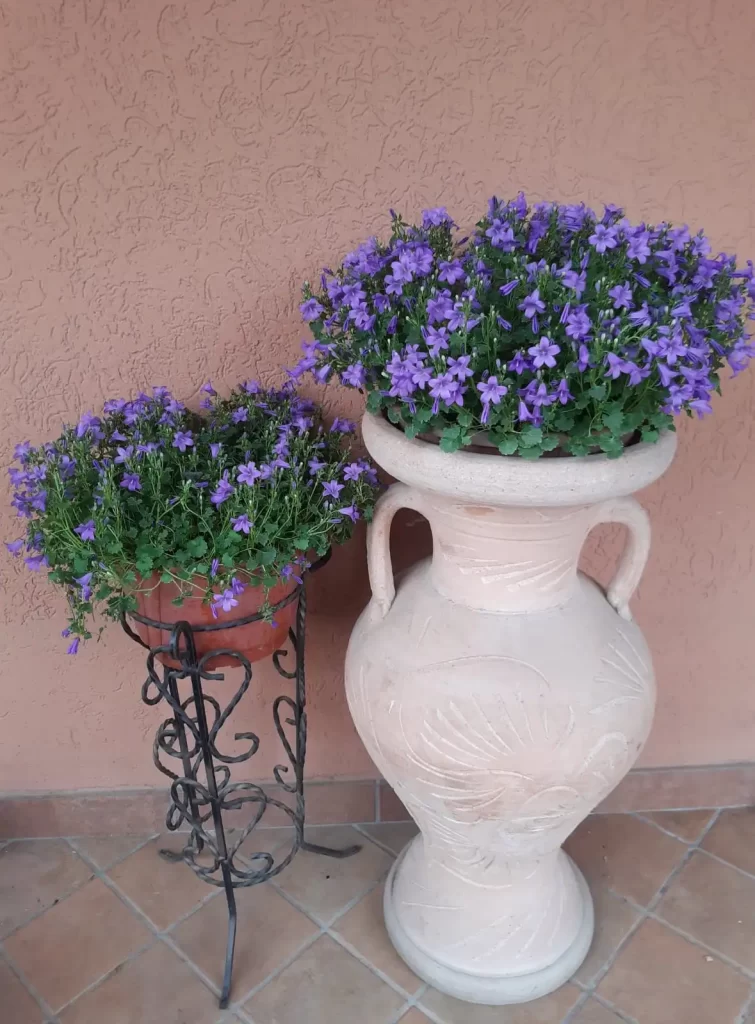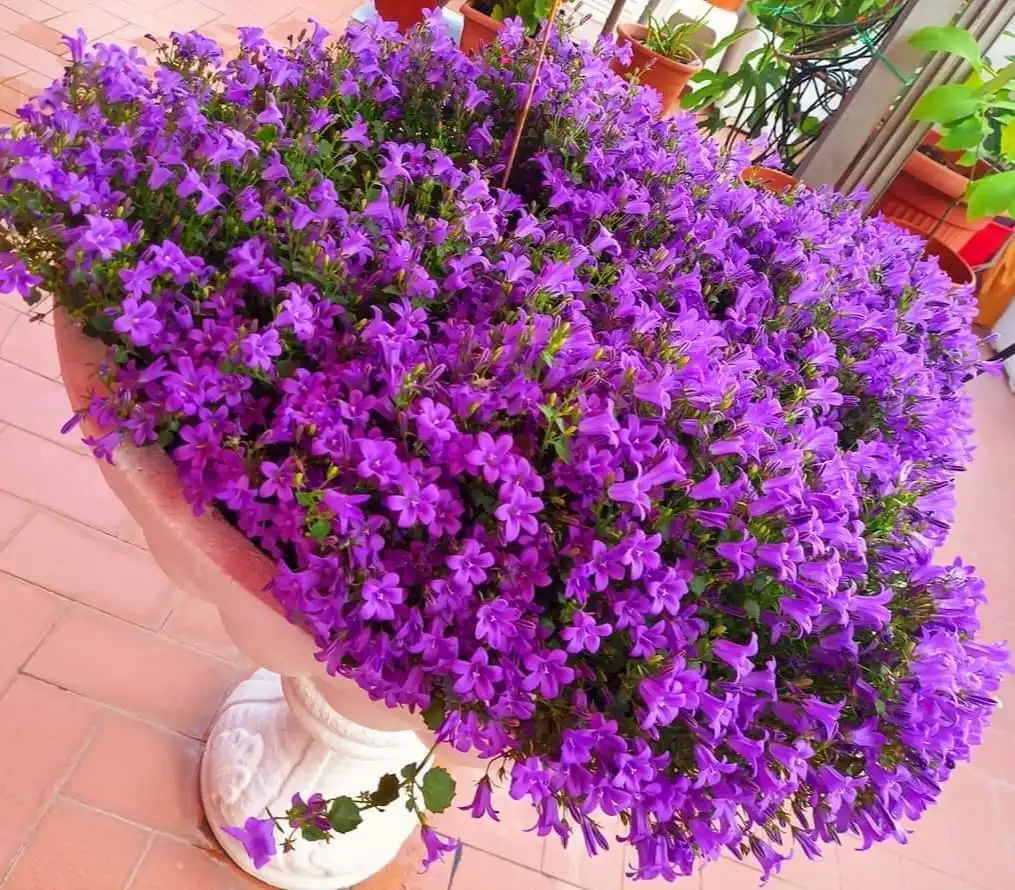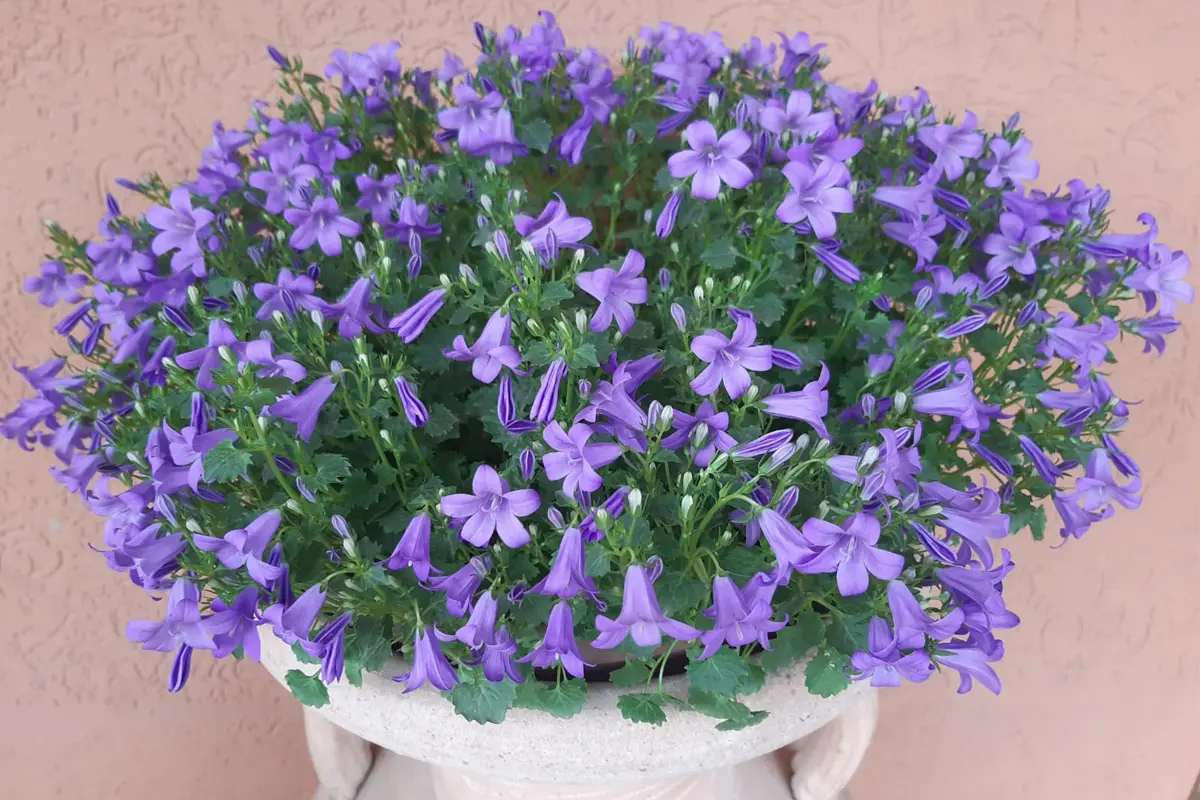The Wall Bellflower (Campanula portenschlagiana), known for its delicate and abundant blooms, is a stunning plant to add to any vertical garden, wall, or even as a ground cover in rockeries. When properly cared for, this perennial brings a burst of color and charm to any outdoor or indoor space. Below, we unveil the secrets to making your Wall Bellflower bloom beautifully, ensuring it thrives year-round.
Understanding the Wall Bellflower
The Wall Bellflower is native to the Dalmatian Mountains in Croatia and is known for its hardy and resilient nature. It produces vibrant purple-blue flowers that can cover a wall or crevice with cascades of beauty. While it’s relatively low-maintenance, certain key factors must be attended to in order to maximize its blooming potential.
Ideal Growing Conditions for Wall Bellflower
Wall Bellflowers thrive in well-drained soil and prefer areas that receive plenty of sunlight. They can also thrive in partial shade, making them adaptable to a variety of garden environments.
- Soil: An ideal soil composition includes a blend of loam, sand, and organic matter. Ensure the soil is slightly alkaline, as acidic soil can hinder growth.
- Light: Full sun to partial shade is best. In hotter climates, providing partial shade during the peak heat of the day is advantageous.
- Temperature: These flowers prefer moderate climates and can withstand temperatures as low as -20°C. In extreme heat, they may require more frequent watering to prevent wilting.
- Watering: Wall Bellflowers enjoy moist but well-drained soil. Overwatering can lead to root rot, so ensure proper drainage.

Secrets to Boosting Flower Production
To get the most blooms from your Wall Bellflower, follow these proven techniques:
Pruning and Deadheading
Regularly deadhead spent blooms to encourage new flower production. Deadheading prevents the plant from putting energy into seed production and redirects that energy into blooming.
- When to Prune: Early spring and after the first flush of blooms in summer.
- How to Prune: Use clean, sharp shears to remove old or dead stems, leaves, and flowers. Cutting back about one-third of the plant after the main blooming season helps stimulate regrowth and further blooming later in the season.
Fertilization Strategy
Wall Bellflowers benefit from a balanced fertilizer applied in the early spring and throughout the growing season.
- Best Fertilizer: Use a balanced 10-10-10 fertilizer to promote healthy growth and blooming.
- Application: Fertilize once in early spring and then every 6-8 weeks during the growing season. Take care not to over-fertilize, as this may result in excessive leaf growth, which can reduce flower production.
Managing Pests and Diseases
Wall Bellflowers are relatively pest-resistant, but they can occasionally fall prey to common garden pests and diseases. Here’s how to keep your plants healthy:
- Aphids and Spider Mites: These tiny pests can suck the sap from the plant, weakening it and reducing bloom production. Frequently check the undersides of leaves for any signs of infestation. Treat them with a mild insecticidal soap or neem oil if needed.
- Slugs and Snails: In damp conditions, slugs and snails can be a problem. Use organic slug repellents or set up traps to keep these pests at bay.
- Powdery Mildew: Overly humid conditions or poor air circulation can lead to powdery mildew, which manifests as white spots on the leaves. Prune away affected parts and apply a fungicide if necessary.

Propagation Techniques
To propagate Wall Bellflowers, you have several options:
Seed Propagation
- When to Collect Seeds: Allow some flowers to go to seed if you wish to propagate via seeds. Harvest in the fall when the seed capsules are dry.
- How to Sow: Start seeds indoors in late winter or early spring, and transplant them outside after the last frost. Scatter seeds over the soil surface and lightly cover with a thin layer of soil. Keep the soil moist until germination occurs, usually in 2-3 weeks.
Division of Root Clumps
- When to Divide: Every 3-4 years, divide the root clumps in early spring or after blooming to maintain the plant’s vigor.
- How to Divide: Dig up the plant carefully, ensuring you don’t damage the roots. Separate the clumps using a sharp, clean knife or spade, ensuring each section has plenty of roots and shoots. Replant in prepared soil and water thoroughly.
Maintaining Optimal Health Throughout the Year
Winter Care
Wall Bellflowers are hardy perennials, but some attention is still needed to help them survive harsh winters.
- Mulching: Apply a layer of mulch (like straw or compost) around the base of the plants to protect the roots from freezing temperatures.
- Pruning for Winter: Cut back the foliage after the first frost to prevent any fungal growth that could harm the plant during winter dormancy.
Summer Care
In hot summers, Wall Bellflowers can become stressed and wilt if not properly cared for.
- Watering: Water deeply during dry spells but allow the soil to dry between waterings to prevent root rot.
- Shade Protection: If your region experiences extreme heat, consider providing some afternoon shade to prevent scorching.
Companion Planting for a Flourishing Garden
The Wall Bellflower looks beautiful alongside other plants that complement its growth habits and aesthetics. Consider planting with:
- Lavender: Both plants enjoy similar growing conditions and create a lovely color contrast with their blue and purple blooms.
- Creeping Thyme: As a low-growing herb, thyme serves as an excellent companion for Wall Bellflowers, enhancing the overall texture of your garden.
- Sedum: A drought-tolerant succulent, sedum pairs well with Wall Bellflowers in rockeries, adding another layer of interest.
Final Thoughts on Growing Wall Bellflower
Wall Bellflowers are a beautiful, versatile addition to any garden, providing a cascading floral display that enhances vertical surfaces or borders. By carefully tending to their needs—pruning, fertilizing, protecting from pests, and ensuring ideal growing conditions—you can enjoy a prolific bloom season year after year. With proper care, your Wall Bellflower will reward you with its stunning beauty and resilience.

